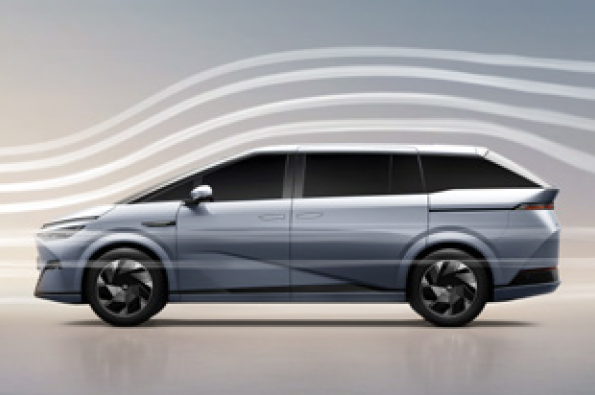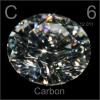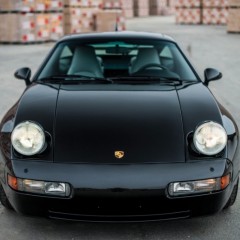Search the Community
Showing results for tags 'Singapore'.
-
Starting a thread to consolidate the sharing of SIM-only plan experiences and lobangs. Still 1 month+ left on my current M1 SIM-only contract and looking at what other players (telco and MVNO) are offering. Came across Zero1's 6u plan which seems pretty competitive, so putting this plan on my radar screen.
-
Has anybody feel that yesterday(Mon 8-Dec-2008) was indeed very cold? From my flat i have to wear sweater in the morning, i am jsut wondering whether it was below the official announced 24 deg C, anyone felt the same?
-
What's fascinating is we had nuclear war heads here. And now, no one know what happened to them. https://www.channelnewsasia.com/cna-insider/separation-declassified-documents-singapore-malaysia-agreement-signing-british-secrets-5312751 5 things you might not know about Singapore’s split with Malaysia, in Separation: Declassified
-
Performance Automobiles Pte Ltd (the Audi dealer in Singapore) has branched out to include a few electric brands. One of the brands In it's stable is the exclusive Authorized Dealership (AD) in Singapore for Xpeng via it's subsidiary XPremium BEV Pte Ltd. There are two Battery Electric Vehicles (BEVs) (currently) from Xpeng available in Singapore. One is in the shape of an SUV and referred to as the G6. The other one and detailed in this thread is the luxury 7 seat people mover - called the X9. Styled unlike other MPVs on the road, the X9 is inspired from starships with the windshield being highly sloped at a 21-degree angled to the A-pillar. The X9's height is low enough to comfortably into all MSC in Singapore - without the worry of scratching the roof. Length : 5,293mm Width : 1,988mm Height: 1,785mm Wheelbase: 3,160mm The X9 is only available in Front Wheel Drive (FWD) in Singapore with a 235kW motor producing 450Nm of torque. Can do the century sprint in 7.7 seconds and has a top speed of 200 km/hr. AC charging is capped at 11kW and time to re-charge will depend on the battery capacity of the two trims available. Uses a 800V architecture for rapid DC charging. Standard range. Battery: 84.5kWh lithium iron phosphate (LFP) from Eve Energy. Range (WLTP): 500 km WLTP energy consumption: 16.9 kWhr/100km AC charging: 5% to 100% in 9.5 hours DC charging: 283 kW; 10-80% in 20 minutes Curb weight: 2,640 kg Gross vehicle mass: 3,220 kg Net carrying weight: 580 kg Long range. Battery: 101.5kWh nickel manganese cobalt (NMC) from CALB Range (WLTP): 590 km WLTP energy consumption: 17.2 kWhr/100km AC charging: 5% to 100% in 11 hours DC charging: 317 kW; 10-80% in 20 minute Curb weight: 2,590 kg Gross vehicle mass: 3,170 kg Net carrying weight: 580 kg The exterior design has a low coefficient of drag number of 0.236. This is reflected in class leading WLTP energy consumption number of around 17.2kWhr / 100km. The best there is now. The back is sloped 23-degree at the rear window. This is to reduce drag/wind turbulence and has the side benefit of less space required behind the vehicle to open the boot. With all seven seats up, the boot is a large 755 L of space. Enough to fit a few luggage's to the airport. When the 3rd row seats are folded down (can go completely into the floor) the available volume increases to 2,554L. Large enough to fit a road bike in the back. It's a very practical vehicle for the family. Underneath the skin, Xpeng has implemented front and rear mega (die) casting - similar to what Tesla uses to improve rigidity, stiffness and integrating with the structural battery pack makes the X9 a very strong and stable vehicle. Should get five star safety rating in Euro NCAP once tests are done. The side benefit of die-casts are reduced complexity in the manufacturing process, improving quality and cost savings in eliminating welds/stamping of multiple parts. The X9 also has a double wishbone front suspension and multilink independent rear suspension, both using dual-chamber air springs capable of 90 mm (3.5") of ride height adjustment as standard, allowing for a 37 mm (1.5") floor entry height. The air suspension can be adjusted up 40 mm and down 50 mm. Great for an aging population with easy ingress and egress inside. Xpeng claims that the suspension automatically adjusts the height based on speed, reducing wind resistance at higher speeds (higher efficiency) and thus improving range. Competition in the MPV space are: Zeekr 009 : 5,207 (L) x 2,024 (W) x 1,856 (H) mm. Wheelbase 3,205 mm. The 009 is also sold by Performance Automobiles under its AD relationship with Zeekr. BYD DENZA D9 : 5,250 (L) x 1,960 (W) x 1,920 (H) mm. Wheelbase 3,110 mm. MG Maxus 9 : 5,270 (L) x 2,000 (W) x 1,840 (H) mm. Wheelbase 3,200 mm. Toyota Alphard : 5,100 (L) x 1,850 (W) x 1,950 (H) mm. Wheelbase 3,000 mm. Hyundai Staria : 5,253 (L) x 1,997 (W) x 1,990 (H) mm. Wheelbase 3,273 mm. KIA Carnival : 5,155 (L) x 1,995 (W) x 1,740 (H) mm. Wheelbase 3,090 mm. Will do a follow up post on interior design as well as a cost breakdown for the X9.
-
http://www.plushasia.com/media_photo/23275 Singapore's million-dollar club grows Singapore - More people made it to the millionaires club last year, with 4,220 taxpayers having assessable income of more than $1 million each. Their combined income came to $8.06 billion, according to the annual report of the Inland Revenue Authority of Singapore (Iras) released on Thursday. They forked out $1.49 billion in income tax. In 2011, in comparison, there were 3,870 people in this group and they earned $7.45 billion. These could be Singaporeans, permanent residents or foreigners. A further 12,921 people earned between $500,000 and $1 million each last year, up from 11,092 people in 2011. Iras collected 7.6 per cent more cash in its latest financial year, as the economy grew moderately and the buoyant property market yielded more in stamp duty collection. Total taxes collected came to $41.4 billion for the 12 months to March 31, up from $38.4 billion in the year before, said The money made up 74.1 per cent of all operating revenue for the Government. The remainder was collected by other agencies for other types of payments - such as certificates of entitlement and Electronic Road Pricing. Iras' collections include corporate taxes, individual income taxes, goods and services tax (GST), stamp duties, property tax and betting taxes. For the financial year, corporate income tax grew 5.8 per cent to $12.8 billion, owing to improved company profits. Individual income tax collection grew by 12.2 per cent to $7.7 billion, due to higher salaries and the cessation of one-off personal income tax rebates given earlier for income earned in 2011. GST collection rose by 4 per cent to $9 billion, in line with the moderate growth in private consumption expenditure. Stamp duty collections jumped 35.7 per cent to $4.3 billion. The rise was due to the introduction of the additional buyer's stamp duty in December 2011 - intended to cool the property market - and more property transactions. Property tax collection fell by 3.1 per cent to $3.8 billion, due to an earlier change in some policies that affected the timing of collection of the taxes. The changes had led to more collections in the previous financial year - April 2011 to March last year. Taxes from betting activities dipped by 2.9 per cent to $2.3 billion. This included duties on Singapore Pools bets like 4D, Toto, Big Sweep and sports betting, and levies on the casino operations of the two integrated resorts. Iras also highlighted its high level of tax compliance - essentially, that almost all parties pay their taxes on time. Tax arrears declined to a record low of 0.79 per cent, among the lowest in the world. "Our ongoing efforts to promote a high level of voluntary compliance have resulted in more individuals and businesses filing their tax returns and paying taxes on time," said Dr Tan Kim Siew, Commissioner of Inland Revenue. "On-time filing rates have improved across all tax types." One of the taxpayers who name himself Throttle says "yes this year is a good year, many tables to be cleaned, my income shoot high high." Throttle who reported his annual income for more than has one million singapore dollar has decided to give himself a holiday break to London, UK.
-
Source: https://mustsharenews.com/singapore-nuclear-energy-2050/ Singapore Could Potentially Use Nuclear Energy By 2050 When the topic of nuclear energy gets brought up, some might instinctively think of the dangers associated with the alternate energy source. However, nuclear energy can also be an efficient power source. On Tuesday (22 Mar), the Energy 2050 Committee published a report showing that Singapore could tap into nuclear energy in the coming decades. With recent advancements, nuclear technology has apparently become safer and more reliable. However, more research and development are needed to determine if it’s indeed viable for Singapore. Nuclear energy could supply 10% of Singapore’s needs by 2050 According to The Straits Times (ST), a report commissioned by the Energy Market Authority (EMA) concluded that about 10% of Singapore’s energy demand could be supplied by nuclear energy by 2050. While Singaporeans might understandably be worried about nuclear energy, the Energy 2050 Committee said advancements in the field have made the alternative power source safer than before. The report projected 3 uncertain geopolitical scenarios in 2050: Clean Energy Renaissance Climate Action Bloc Emergent Technology Trailblazer S’pore can determine if nuclear energy is viable by 2040s In the 3rd scenario, the world is fragmented and technology advancements will delay but eventually arrive. Singapore will be able to deploy low-carbon alternatives, such as nuclear energy, into its energy mix. The report stated that a fragmented geopolitical situation means that countries would find it harder to collaborate and achieve their climate targets. This would limit electricity imports in Singapore’s energy mix. This is as opposed to the other 2 scenarios, where electricity imports would contribute a significant portion of Singapore’s energy needs. Scenario 1: Clean Energy Renaissance Scenario 2: Climate Action Bloc Nevertheless, in all 3 scenarios, electricity imports, hydrogen, solar, and energy storage systems will be important. The Straits Times (ST) reported that in 2014, Singapore allocated $63 million to fund research and education in nuclear safety, engineering, and science. By the 2040s, Singapore would likely be able to determine if nuclear energy is viable. If so, we can start developing domestic generation capacities. Could contribute greatly to our climate efforts Once associated with danger and volatility, we are glad that modern developments have made nuclear energy much safer and hopefully more viable. While it might sound ambitious for Singapore to incorporate nuclear energy, it could contribute greatly to our nation’s climate efforts.
-
SINGAPORE – High certificate of entitlement prices are not quelling motor dealers’ appetite to grow their portfolios. Premium Automobiles, the retail dealer for Audi, has just been appointed the distributor for Zeekr, a luxury electric vehicle (EV) brand from Chinese automotive giant Geely. The agreement was signed in late December. The showroom for the brand will be built in the Leng Kee Road area in the first half of the year, Premium Automobiles said in a statement sent to The Straits Times late on Dec 28. The service facility will be in the Ubi industrial area. When asked, Premium Automobiles said the details are still being finalised for their exact locations, but added that these will be dedicated facilities that will not be shared with Audi cars, which the company will continue to sell. Zeekr will be launched here with two models – 009, which is a multipurpose vehicle (MPV), and X, a sports utility vehicle (SUV). Deliveries will begin in the third quarter of 2024. The 009 MPV is over 5.2m long, which makes the six-seater bigger than the latest generation Toyota Alphard, which measures just under 5m. Premium Automobiles did not confirm the exact specifications of the models, but the 009 MPV has a promised range of 800km on a full charge. Its dual motor set-up offers maximum power of 400 kilowatts, enabling it to sprint from 0kmh to 100kmh in 4.5 seconds, and making it the world’s fastest MPV. The X SUV is about the same size as the Nissan Qashqai at 4.4m long. Two versions are offered in the other markets where Zeekr is already operating. One has a 200kW motor that powers the rear wheels and boasts a range of up to 440km and the other is a zippier 315kW dual-motor all-wheel-drive version that can cover 400km on a single charge. Singapore, Hong Kong and Macau will be the first places where Zeekr right-hand drive cars are available. https://www.straitstimes.com/singapore/transport/chinese-ev-maker-zeekr-s-cars-to-be-sold-in-singapore-with-deliveries-from-q3-2024
-
I decided to create a separate thread for AI. Things are really rapidly changing. AI to replace sales staff that are in a revolving door situation. Seems like this company has hit upon a niche that larger companies are very interested in. Not all of these ideas will work out. But you can bet a significant portion of desk/admin jobs will slowly be redundant over the next 10-15 years. Maybe by then, some of us would be working alongside AIs to do some of the routine tasks. https://techcrunch.com/2017/04/09/saleswhale-seed-funding/
- 647 replies
-
- 2
-

-
- artificial intelligence
- singapore
-
(and 3 more)
Tagged with:
-
this one not expatriates or what. this one is general cost of living http://www.thrillist.com/travel/nation/the-most-expensive-city-in-the-world-is-singapore-worldwide-cost-of-living-2014-report?ref=facebook-869
- 795 replies
-
- 6
-

-
- singapore
- most expensive
- (and 4 more)
-
Surprising no one is interested in Singapore’s pre-history and founding story Hope this will replace the US circus and China bashing threads for a while
-
Doing your laundry isn’t a sexy activity (hmmm...), but there’s something about laundromats that feels inexplicably captivating. A shift in general living circumstances, coupled with incessant wet weather, has gotten them and I reacquainted over the last couple of months. The last I had really frequented them was during my uni years. But even my memory of those times spent tapping my Barclays/N26 debit cards to activate the washing and drying cycles is quite different: Just taking a short stroll over to the machines, dumping everything in and setting a timer, heading back to the room for a short nap, then returning to settle what was necessary thereafter. That proximity has not been afforded to me where I stay now. Instead, heading out to the laundromat is an (admittedly comfortable) 8-10 minute drive. In such a situation, you’re effectively just stuck there. It must be the sweet lens of nostalgia over my uni days (when I felt less jaded; like there was more of me that could be moved and broken). Mixed with mainstream romanticisation of laundromats. Mixed with flashes of one of my favourite films. But I’ve quite enjoyed these visits I’ve had to make. The first one, with my mum tagging along, was already a pleasant experience. Then, I suggested that we both put our phones away and each take some time to open a book/magazine and learn to be bored. She was up for the challenge. It was difficult at first, then it was relaxing and soothing. We both climbed back into the car feeling more energised than when we had arrived. The most recent visit was a solo trip. It was nearly 11:30pm, having just returned home from a long day of activities, when I realised that I had to head out. The frustration quickly eased. In the stillness of that wet Sunday night, armed with my iPad (and a couple of videos and articles I had been interested in catching up on), I finally found peace for the week - in the low whir of the washing machine drum spinning, the hum of the orbital fan oscillating above, and in the smell of detergent powder and warm, freshly-dried clothing. Interestingly, laundromats appear to have settled into a steady-state presence in Singapore. This CNA article goes into how some brilliant minds amongst us have thought about reworking the conventional model of the laundromat to draw crowds in. I’m thinking of heading to one of them soon. It will be a solo outing for sure - an afternoon protected fiercely, reserved selfishly, for myself alone. I know a lot of this is, as mentioned above, is romanticisation. I can imagine that hauling bags of laundry out of the house on the regular could be extremely tiresome for some households. Especially if - unlike me - they don’t have a car at home to tap on. Laundromats are not dirt-cheap either - the most basic wash option for a full 14kg load is $7-8, following which you’ll have to pay another $6-7 for the dryer (depending on how kiasu you are about your Uniqlo tees being dry). But I guess different spaces have always held different meanings for different people. I hope it's okay that I'm ascribing this sort of value to this one. So much of life recently has passed by so quickly; been exasperating to parse. In my perpetual state of frenzy lately, this image of a laundromat has slowly become a compassionate invitation to exhale and to find pause. - Matt
-
- life
- laundromats
-
(and 3 more)
Tagged with:
-
I'm beginning this thread so I can continue to discuss matters on a topic that interests me. I know there is a thread with similar content, but it's become a bit toxic, so if the mods don't mind, I'll start one here? Otherwise go ahead and merge. Basically we have an economic crisis on us, and internationally things are not doing well either. But in spite of this, property prices seem to be headed northwards and the agents will want to tell you, they won't drop. But job losses are on the way, and the capital appreciation on property isn't what it used to be and despite what agents try to tout, one must consider all factors rationally, and see if your money is better served elsewhere. Eg a good benchmark will be the 2.5% that CPF offers. But property remains enticing because it takes a lot more effort and investigation to find alternatives and not all Singaporeans are that hardworking or familiar with the investment instruments available. I wonder what the rest think? Cheers
-
Hey guys, any1 knows which marathon is in Feb - April 2011 which has the 10km distance? Cos i planning to train for marathon but i dun wan to go straight for the 42km, i prefer to gradually increase the distance..so im hoping to run 10km beginning of next yr..den 21km at adidas sundown in May..den eventually the StanChart 42km in Dec next yr. Any advice? Thanx in advance.
-
Hi anyone know where in Singapore that still sell this Chicken in a Biskit? been searching NTUC and ColdStorage the last 3 months can seem to find on their shelves. Did Singapore discontinue because Made in China now? As Australia stop selling since late last year 2015. http://www.heraldsun.com.au/news/victoria/ritz-in-a-biskit-chicken-and-dixie-drumstick-snacks-discontinued-in-australia/news-story/90a755e390ca181deb82fdc457c4635c
-
hi all started this new thread for perodua owners in s'pore. can share tips on modi, spare parts n accessories, etc.
-
lai liao 😁 @ https://www.techinasia.com/source-tesla-nears-final-approval-sell-cars-singapore
-
https://www.straitstimes.com/singapore/more-spending-on-healthcare-does-not-mean-a-healthier-population-ong-ye-kung SINGAPORE - The Republic’s healthcare challenge in the coming years is not spending more, but to ensure that Singapore does not go the way of many OECD countries where healthcare costs are “spiralling and escalating out of control”, Health Minister Ong Ye Kung told Parliament on Wednesday. Better health outcomes can be achieved by continuing with Singapore’s sensible and practical approach of having different layers of safety nets – subsidies, MediShield Life, MediSave and MediFund – and combining it with the Healthier SG strategy to reduce the sickness and disease burden even as the population ages, he added. Mr Ong was responding to Progress Singapore Party (PSP) Non-Constituency MP Leong Mun Wai’s assertion on Tuesday that the Government has not spent enough to cover Singaporeans’ healthcare costs, and should be spending more to help with medical bills. Mr Leong had cited data to show that the Government’s share of healthcare expenditure is lower than the average among Organisation for Economic Cooperation and Development (OECD) countries. The majority of the 38 OECD members are regarded as developed countries. Mr Ong noted that it is widely accepted by health economists that spending more on healthcare does not mean better outcomes. For instance, the United States and Britain spend about 17 per cent and 10 per cent of their gross domestic product on healthcare respectively, compared with Singapore’s 4 per cent. Despite this, both those countries are facing a high incidence of chronic illnesses and high obesity rates, and expected lifespans there are lower than in Singapore, he said. Conversely, Singapore has delivered good outcomes given how much it is spending, while keeping healthcare affordable for the middle- and lower-income groups, Mr Ong added. Seven in 10 Singaporeans in subsidised hospital wards do not pay any out-of-pocket expenses, and nine in 10 pay less than $500 in cash. “So when Mr Leong asked the Government to spend more to lower out-of-pocket expenses further, he really meant to channel resources to unsubsidised patients, that is, those staying in A class wards or private hospitals,” he said. “This is where the big bucks and big expenditure are, and it will push our healthcare expenditure and spending to the levels of OECD countries.” Mr Leong also failed to mention that such spending ultimately has to be raised from the people through taxes, and made no mention of where PSP will get the funding from, Mr Ong added. The reality is that government healthcare spending has already been rising, having tripled between 2011 and 2020, and is expected to triple again between 2021 and 2030, said Mr Ong. Mr Leong had also called for increased spending from the Pioneer Generation (PG) and Merdeka Generation funds, as he felt that spending from those funds has been small relative to their total assets. This understanding is misplaced as both funds were sized based on the projected lifetime cost of the benefits, said Mr Ong. He noted that PG members are as young as 74 and “still have quite a bit of runway ahead of them”, though the Government will continue to review the adequacy of both funds. The Health Minister also responded to Workers’ Party MP Jamus Lim’s suggestion that Singapore’s medical infrastructure is too lean, and that the current hospital bed crunch speaks to a need to relook healthcare capacity. Mr Ong said every country is facing a similar crunch post-Covid-19, including the OECD countries despite their higher bed-to-population ratio. The reason for the bed crunch here is that the average length of hospital stay has increased by 15 per cent compared with before the pandemic, he said. This is likely a result of more older people falling ill due to an “immunity debt” as safe management measures were lifted, a problem exacerbated by poorer health from social isolation amid Covid-19. Singapore is catching up on healthcare capacity as projects delayed by Covid-19 – such as the Tan Tock Seng Hospital Integrated Care Hub and Woodlands integrated health campus – are now being completed, said Mr Ong. More transitional care facilities will also be set up to offer rehabilitative care for more stable senior patients. Closing the debate on the motion to support healthcare here beyond the pandemic, Nominated MP Tan Yia Swam responded to Mr Leong’s charge that drug prices were “marked up unreasonably for non-subsidised patients” in order to cross-subsidise others. Dr Tan, who is a breast surgeon, asked if Mr Leong had evidence that this was happening, and noted that non-subsidised patients are those who opt for an A-class or B1-class ward, or foreigners. “I, as a doctor, would think that allowing market forces to determine costings is fair, or would Mr Leong also want taxpayers to pay for everyone?” she asked. Mr Leong said he had heard “feedback from residents (that) they pay different prices when in different classes”, and that while it is understandable for services to be priced differently based on ward class, this should not be the case for drugs. The NCMP had earlier called on the Government to centralise drug procurement across public and private medical institutions, as doing so would reduce the cost of medicine. In response, Mr Ong said Singapore deliberately chose to have a variegated market for healthcare, with private-sector doctors having different business models. For instance, some private doctors charge very low consultation fees but make a margin on the drugs they sell, while others do the reverse, he said. “Sometimes you want to let market forces operate, but at the same time have some discipline through... what we subsidise and what we don’t, and I think that’s how we rein in unnecessary healthcare costs,” said Mr Ong.
- 29 replies
-
- 4
-

-
- healthcare
- spending
-
(and 5 more)
Tagged with:
-
Boom and doom? Singapore to launch vaccinated travel lanes with India, Indonesia and Saudi Arabia SINGAPORE: Singapore will extend its vaccinated travel lane (VTL) scheme to more countries starting from Nov 29, according to the Ministry of Health (MOH) on Monday (Nov 15). The country intends to launch VTLs with India and Indonesia from Nov 29, and with Qatar, Saudi Arabia and the United Arab Emirates (UAE) from Dec 6.
-
I know we have a separate property thread, but IMO, this deserves a separate discussion. This area will be big, in size and impact.. https://www.tnp.sg/news/singapore/9000-housing-units-including-hdb-be-built-keppel-club-site https://www.channelnewsasia.com/news/singapore/ndr-2019-greater-southern-waterfront-pulau-brani-sentosa-keppel-11819376?cid=h3_referral_inarticlelinks_24082018_cna https://www.channelnewsasia.com/news/singapore/specific-measures-could-dampen-lottery-effect-of-public-housing-11825766 https://www.youtube.com/watch?v=y6xz58yCqGk
- 256 replies
-
- 6
-

-
- greater southern waterfront
- property
- (and 7 more)
-
Very intriguing documentary from CNA. I think a topic like this will end up forcing ourselves to ask some difficult questions. Can be quite sobering to think about. Part 1: Part 2:
-
YES! The world will get a chance to know more about our little red dot. BMW i7 Singapore Icons Is a Bespoke Electric Luxury Sedan With Rolls-Royce Paint (https://www.autoevolution.com/news/bmw-i7-singapore-icons-is-a-bespoke-electric-luxury-sedan-with-rolls-royce-finish-254367.html) BMW is strengthening its presence in Asia by unveiling a one-of-a-kind i7. Designed to commemorate Singapore's 60th anniversary, as well as the company's local 40th birthday, the model is aptly called the BMW i7 Singapore Icons and has just celebrated its premiere. According to BMW Group Asia's Managing Director, Lars Nielsen, "planning for this masterpiece began 18 months ago and was a labor of love." The car in question "exhibits the best BMW has to offer, including refined materials, supreme craftsmanship, and individualization, all to honor the Lion City." The all-quiet luxury sedan is presented in Madeira Red, a dark red metallic paint finish sourced from Rolls-Royce's portfolio. The hue is available through BMW Individual, the company's personalization division, and sports "opulent tones of rich madeira wine and dark cherry-black hues." The company says that it chosen this color due to its multi-layered pearlescent effect, adding that the i7 Singapore Icons is the first car in Singapore to be presented in it and it will remain that way. Besides the special color, the all-new and unique BMW i7 Singapore Icons sports a 'Singapore Icons' logo on the Hofmeister kink, and that is another way to tell it apart from the rest of the lineup. The automaker says that this position was specially chosen to honor the Hofmeister kink's roots, as it first appeared on a Bimmer back in the 1960s, and it was the 1500. The 20-inch wheels were crafted by BMW Individual and feature a two-tone look and a diamond-cut finish, further highlighting the model's special nature. Opening the door of the BMW i7 Singapore Icons will reveal the Smoke White Merino leather upholstery, said to echo the colors of the Singapore flag (red and white). The high-end upholstery also came from BMW Individual's portfolio and is said to be robust, breathable, and soft. The car manufacturer states that "each hide is carefully selected for its immaculate, unblemished quality," so the attention to detail is certainly on deck. The 'Singapore Icons' design bedecks all four headrests in Alaska Gray, another special touch from the company's personalization division. A dashboard inlay pretty much rounds off the special design of the car, featuring seven of the country's icons. Some of the landmarks on deck include the Marina Bay Sands, Singapore Flyer, Gardens by the Bay Supertree Grove, Singapore Changi Control Tower, Anderson Bridge, Merlion Statue, and ArtScience Museum. Crafted from a 25.7-cm (10.1 in) wide single-piece metal thinner than 1 mm, it is integrated into the fine wood in oak gray metallic and sports a mirror-like finish. The most affordable BMW i7 in Singapore is the eDrive50 Pinnacle, which starts at S$625,888 (equal to US$488,355), and in the United States, the model carries an MSRP of US$105,700 (S$135,440).
-
VW Singapore plots Skoda comeback Volkswagen-owned Czech brand Skoda is making a comeback, yet again. But this time, it is parent group Volkswagen which will do its own importing and retailing here. Volkswagen Group Singapore - the manufacturer-owned importer and retailer of Volkswagen vehicles here - has registered a new company for this purpose. According to the Accounting and Corporate Regulatory Authority, Skoda Centre Singapore was registered last month and will be operating out of 247 Alexandra Road, which is the same address as the VW showroom. The Straits Times understands renovations are being carried out at the facility and that Skoda Centre Singapore will start operations in the first quarter of next year. Volkswagen Group Singapore was not available for comment, but it is understood that a meaningful price differential will be in place to re-launch the Czech brand here. Previously, Skoda cars - which are based on Volkswagens - were the same price or even costlier than equivalent VW models. In other markets, Skodas are cheaper. The brand was last represented by Harvest Automobiles, part of businessman Peter Kwee's now dormant motor group of companies. Harvest Automobiles went bust in 2013 - the third Skoda agency to have failed in Singapore. The Straits Times understands Vertex Automobiles, the dealer for Chinese automobile brand Chery that is owned by egg trader Lian Fong, had made a pitch for the Skoda franchise. But it has since landed Seat, a Spanish brand also owned by Volkswagen Group. Skoda had also been courting Trans Eurokars, a multi-franchise group owned by businessman Karsono Kwee. Among its brands are Rolls-Royce, Porsche, Mini and Mazda. The best year for the Skoda brand here was 2010, when it sold 105 cars. That is less than 4 per cent of Volkswagen sales last year. Will the brand have better success under Volkswagen? Nanyang Business School's Adjunct Associate Professor Zafar Momin, previously an automotive expert with the Boston Consulting Group, said: "Skoda may be able to make a comeback in Singapore if priced and promoted properly. It needs to be very competitive with its Korean competitors in terms of pricing, as it could provide solid, competitive products targeted at value segments of the markets. "With VW Singapore now doing it themselves, it has a better chance than before. Having said that, I wonder what "comeback" really means in a small crowded Singapore car market which has small volumes for many non-mainstream brands. Would it really be worth the effort and to what extent would it cannibalise VW products?" When contacted back in 2014 - when Harvest Automobiles relinquished the business - Volkswagen Group Singapore said it had no plans to take over the Skoda retail business here. It has, however, taken over the maintenance and warranty of Skodas here. There are about 400 Skoda cars in Singapore today. As a onwer of both Skoda and VW model, I can attest that Skoda is indeed better, in almost every aspect, than VW. I can wait to welcome it back to Singapore!! Here are some interesting models in current Skoda lineup, that I hope can be made available to local motorist when sales start next year. Superb Superb Combi Kodiaq
-
Singapore wants top foreign talent to avoid being left behind https://sg.finance.yahoo.com/news/singapore-wants-top-foreign-talent-062349407.html?fbclid=IwAR0zS_Nr17XUh69xca_hVr26IfTiYN15fZEbToSIWP-CeVFjW7j2-BJBZ6E Bloomberg Sun, 21 August 2022 at 2:23 pm A points-based system for allowing in expats is set to kick in next year. Singapore wants to lure more top talent to its shores, joining Germany and the UK in the contest for cosmopolitan professionals. “In this global contest for talent, Singapore cannot afford to be creamed off, or left behind,” Prime Minister Lee Hsien Loong said in his annual National Day Rally address Sunday. “This is an age where talent makes all the difference to a nation’s success,” he said, adding details will be released soon. The business-friendly Southeast Asian city has long been a magnet for international talent and the rich. But worries among locals about the large numbers of foreigners and stringent Covid rules led to the largest decline in white-collar expats in over a decade last year. Meanwhile, countries including the UAE, the UK and Germany rolled out plans to attract talent. And mobile, young professionals are putting countries from Curacao to Cape Verde on their horizon. Lee signalled that the new initiatives will especially target “sectors with good potential” beyond technology, where there are already existing plans to keep talent. He also acknowledged Singaporeans are “rightly concerned” about the large numbers of foreigners in the city. “While we manage the overall population of foreign professionals here, we must not stop seeking out top talent who can contribute to our Singapore Story,” Lee said. “And every Singaporean will benefit from our progress and success.” A points-based system for allowing in expats is set to kick in next year. Singapore offers permanent residency status to entrepreneurs and investors who “intend to drive their businesses and investment growth from Singapore” via a Global Investor Programme. Another plan launched in 2021 offered 500 visas for tech-related roles.
-
Simple logic: Population goes up + supply of COE remains the same (0 growth policy) + more company bidding for COE = 6 digits COE price! LTA really huat until cannot recognize home. (huat gao buay jin chu) 6.9 mil target is realizing for sure, and maybe even more. We lower and middle class is going to get squeeze out by the force very soon. [:(] Source: https://www.channelnewsasia.com/singapore/singapore-population-604-million-non-resident-increase-4627281 This was a 1.2 per cent increase from June last year, when the total population exceeded 6 million for the first time. The latest figures were published on Monday (Sep 29) in the annual Population in Brief report by the National Population and Talent Division (NPTD) of the Prime Minister’s Office and its partner agencies. The non-resident population increased by 2.7 per cent from 1.86 million in June 2024 to 1.91 million in June 2025. The increase came primarily from work permit holders, followed by migrant domestic workers. The pace of foreign employment growth in Singapore remained stable from June 2024 to June 2025, compared with June 2023 to June 2024, said the report. The foreign workforce makes up about two-thirds of the non-resident population, while the remaining third comprises mainly maids, dependents and students. "The non-resident population is diverse, and its size and composition fluctuate depending on our economic and social needs," the report said. As of June 2025, there were 4.2 million Singapore residents – 3.66 million citizens and 0.54 million permanent residents (PRs). The citizen population increased by 0.7 per cent from 3.64 million in June 2024, while the PR population remained stable. Singapore's annualised population growth rate of 1.5 per cent over the past five years – from 2020 to 2025 – was higher than the 0.5 per cent over the preceding five-year period. This was mostly due to an increase in the number of work permit holders in the construction sector to support key infrastructure projects such as Changi Terminal 5 and the ramping up of housing supply, the report said. There were 29,237 citizen births in 2024, 1.2 per cent more than the 28,877 citizen births in 2023. Citizen births refer to babies born to at least one Singaporean parent. The average number of births per year in the last five years (2020 to 2024) was 30,400, lower than the preceding five years, which stood at 32,900. The median age of citizen mothers at first birth was 31.6 years in 2024, up from 30.3 years in 2014. The report said that the resident total fertility rate was 0.97 in 2024, unchanged from 2023. Singaporean families are getting smaller, with fewer children per family, the report noted. Over the past two decades, the share of citizen ever-married females without children or with one child has increased from 6.7 per cent to 14.4 per cent and 15.9 per cent to 22.8 per cent respectively. Within the same period, the share of citizen ever-married females with three or more children decreased significantly from 34.5 per cent to 20.6 per cent. "Decisions to get married and have children are deeply personal," said the report. "As seen in many other advanced societies and observed in our surveys and engagements with Singaporeans, the trend of low fertility reflects a generational shift where younger Singaporeans value and prioritise other life goals ahead of marriage and parenthood. "More Singaporeans are marrying later and delaying childbearing or choosing not to have children." From the government's survey and engagements with Singaporeans, marriage and parenthood decisions are influenced by a "wide range of factors", including the costs of raising children, balancing work and family commitments, and expectations around what it means to be a good parent. There were 22,955 citizen marriages in 2024, 5.7 per cent lower than the figure of 24,355 in 2023. This was still higher than the 22,165 in 2019, the report noted. Citizen marriages refer to marriages involving at least one Singaporean. The average number of citizen marriages per year in the last five years (2020 to 2024) was about 23,000, a drop from the 23,600 in the preceding five years. The median age at first marriage for citizen grooms and brides was 30.8 and 29.1 years in 2024, up from 30.1 and 27.9 years respectively in 2014. The report also provided data for transnational marriages and interethnic marriages in 2024. These made up 37 per cent and 19 per cent of citizen marriages respectively. The report noted that the proportion of singles has been rising in recent years. Between 2019 and 2024, the proportion of singles rose across almost all male and female age groups. "This trend is particularly pronounced in the younger age groups, with the 25 to 29 and 30 to 34 age groups registering higher increases in the proportion of singles, compared to other age groups," the report said. The report said that despite the trends around marriage and birth, aspirations to marry and have children remain strong in Singapore. According to the report, 80 per cent of young Singaporeans say they intend to marry, and over a third of married couples aspire to have three or more children. "The government is committed to supporting Singaporeans’ parenthood aspirations, with a comprehensive suite of measures across areas such as housing, healthcare, preschool and education, financial and work-life support," it added.
-
Personally, the mindset of the national is if it is FREE we will keep it hence, i dont envisage a possible reduction in our NS duration what i am very worried about is the world is moving so very fast we already had been disadvantaged by NS, resulting in being 2 or 2 1/2 years behind our girls and our foreign classmates in the future it will be worse for our children even 6 months can mean a break or score the economic cycle also is shorter hence, i am just worried about our children am i worrying too much for our kids or should i just relax TAIPEI
















.png)











